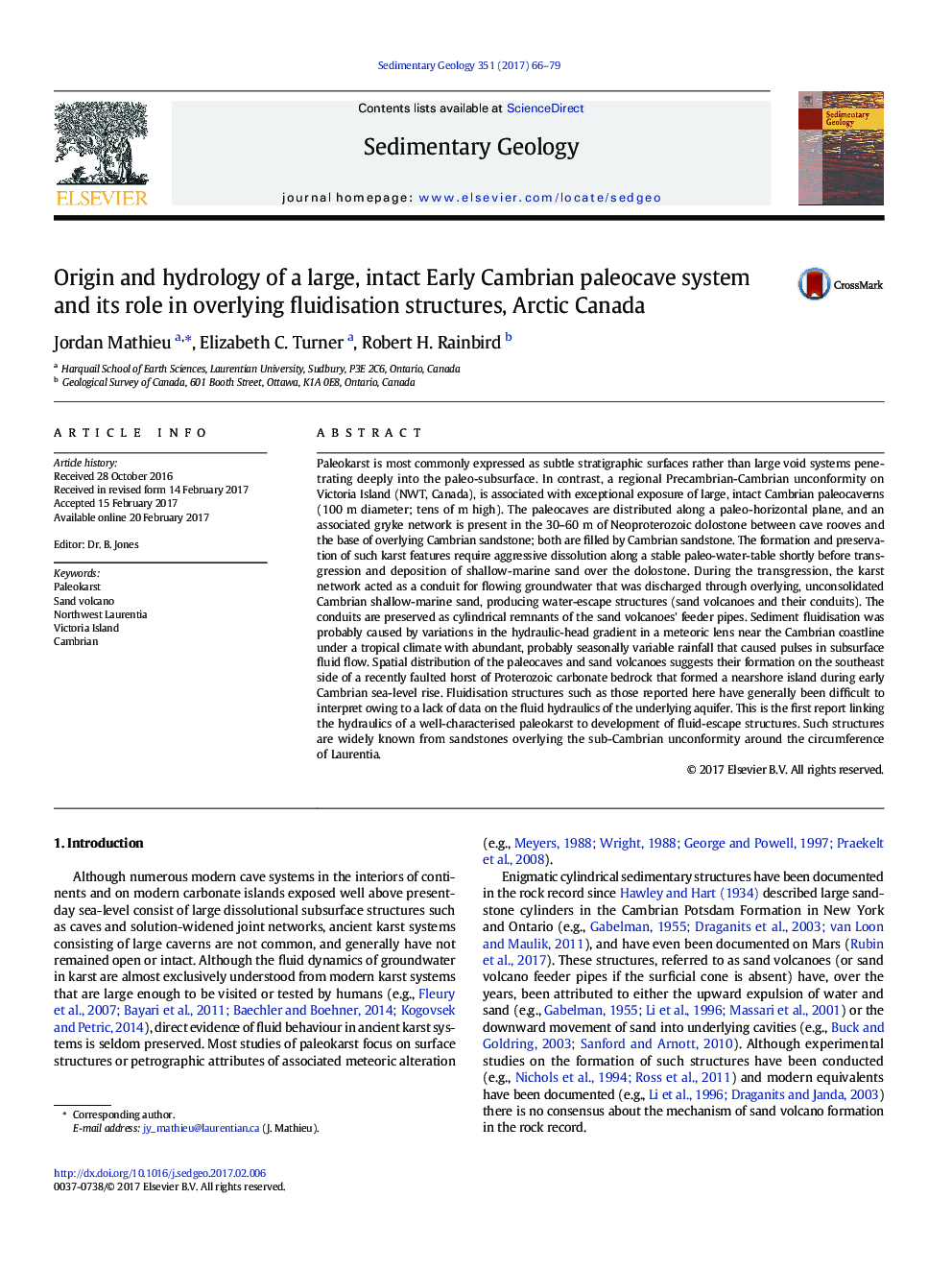| کد مقاله | کد نشریه | سال انتشار | مقاله انگلیسی | نسخه تمام متن |
|---|---|---|---|---|
| 5781409 | 1636012 | 2017 | 14 صفحه PDF | دانلود رایگان |
عنوان انگلیسی مقاله ISI
Origin and hydrology of a large, intact Early Cambrian paleocave system and its role in overlying fluidisation structures, Arctic Canada
ترجمه فارسی عنوان
منشاء و هیدرولوژی یک سیستم پائولووبره زودهنگام بزرگ و بدون آسیب و نقش آن در ساختارهای روان شناختی بیش از حد، قطب شمال کانادا
دانلود مقاله + سفارش ترجمه
دانلود مقاله ISI انگلیسی
رایگان برای ایرانیان
کلمات کلیدی
موضوعات مرتبط
مهندسی و علوم پایه
علوم زمین و سیارات
فرآیندهای سطح زمین
چکیده انگلیسی
Paleokarst is most commonly expressed as subtle stratigraphic surfaces rather than large void systems penetrating deeply into the paleo-subsurface. In contrast, a regional Precambrian-Cambrian unconformity on Victoria Island (NWT, Canada), is associated with exceptional exposure of large, intact Cambrian paleocaverns (100Â m diameter; tens of m high). The paleocaves are distributed along a paleo-horizontal plane, and an associated gryke network is present in the 30-60Â m of Neoproterozoic dolostone between cave rooves and the base of overlying Cambrian sandstone; both are filled by Cambrian sandstone. The formation and preservation of such karst features require aggressive dissolution along a stable paleo-water-table shortly before transgression and deposition of shallow-marine sand over the dolostone. During the transgression, the karst network acted as a conduit for flowing groundwater that was discharged through overlying, unconsolidated Cambrian shallow-marine sand, producing water-escape structures (sand volcanoes and their conduits). The conduits are preserved as cylindrical remnants of the sand volcanoes' feeder pipes. Sediment fluidisation was probably caused by variations in the hydraulic-head gradient in a meteoric lens near the Cambrian coastline under a tropical climate with abundant, probably seasonally variable rainfall that caused pulses in subsurface fluid flow. Spatial distribution of the paleocaves and sand volcanoes suggests their formation on the southeast side of a recently faulted horst of Proterozoic carbonate bedrock that formed a nearshore island during early Cambrian sea-level rise. Fluidisation structures such as those reported here have generally been difficult to interpret owing to a lack of data on the fluid hydraulics of the underlying aquifer. This is the first report linking the hydraulics of a well-characterised paleokarst to development of fluid-escape structures. Such structures are widely known from sandstones overlying the sub-Cambrian unconformity around the circumference of Laurentia.
ناشر
Database: Elsevier - ScienceDirect (ساینس دایرکت)
Journal: Sedimentary Geology - Volume 351, 15 April 2017, Pages 66-79
Journal: Sedimentary Geology - Volume 351, 15 April 2017, Pages 66-79
نویسندگان
Jordan Mathieu, Elizabeth C. Turner, Robert H. Rainbird,
